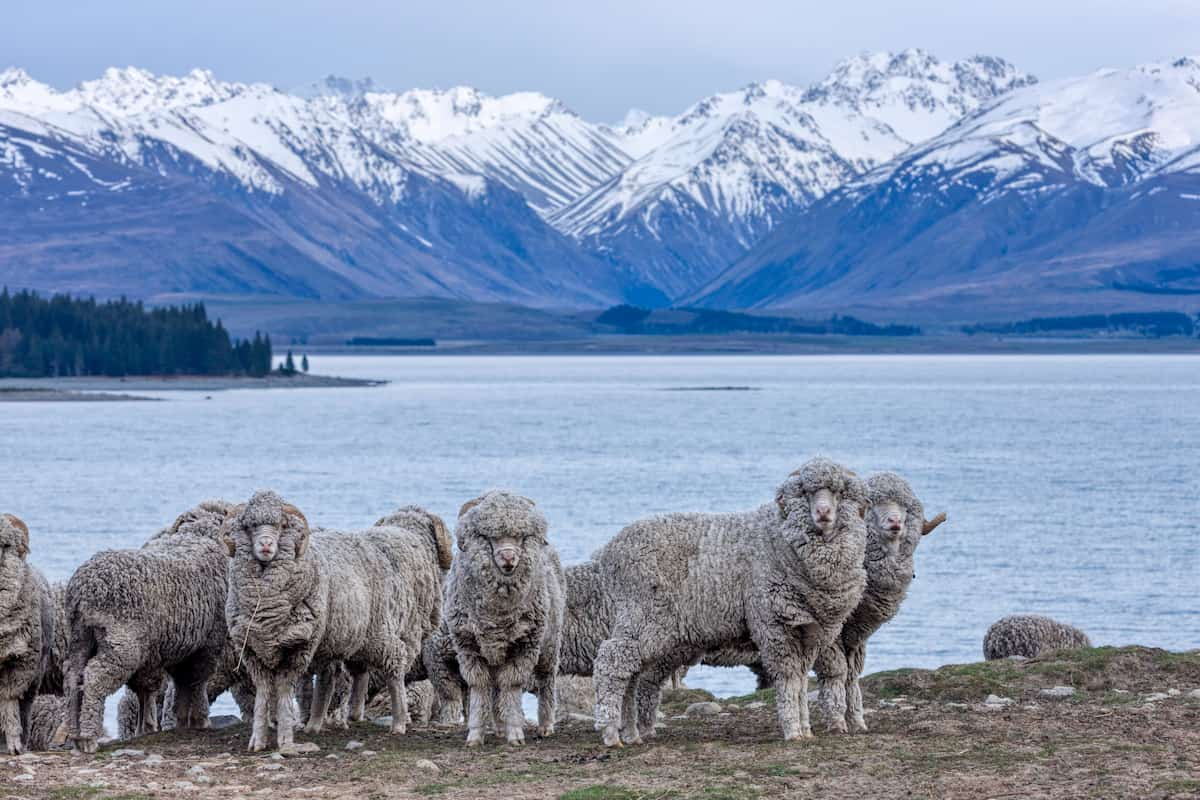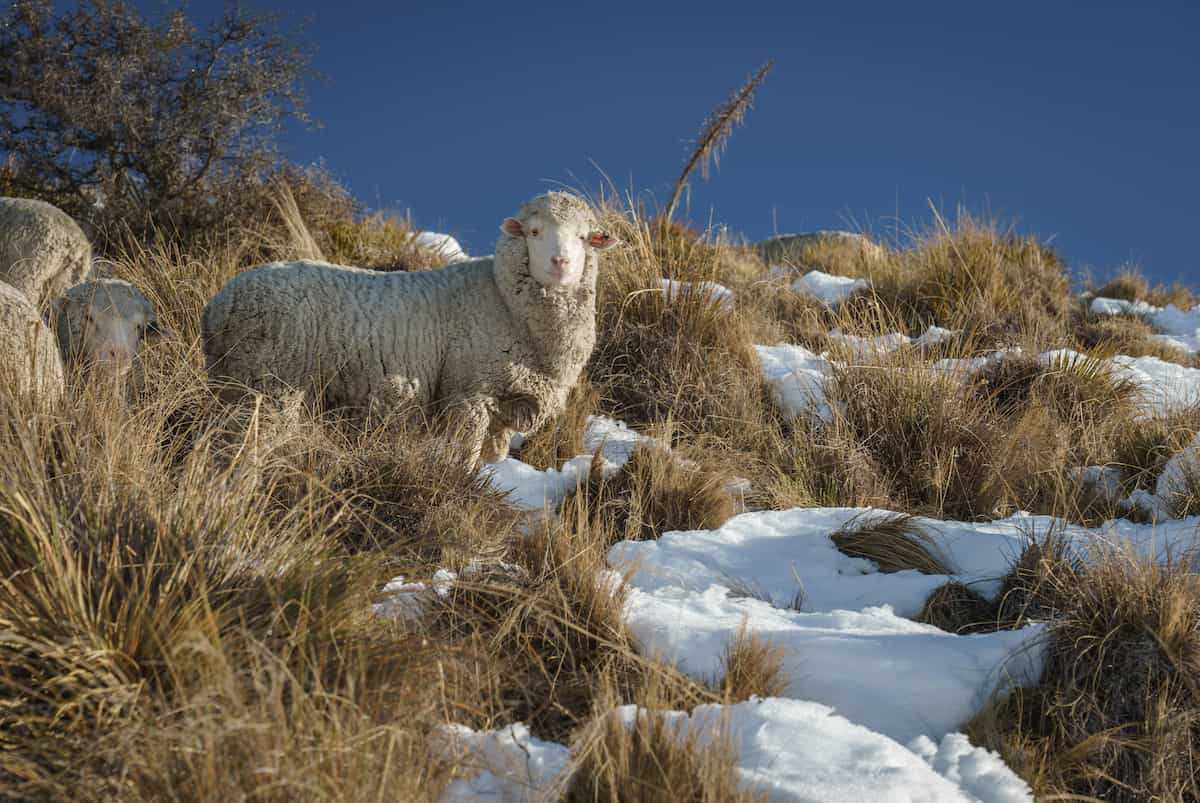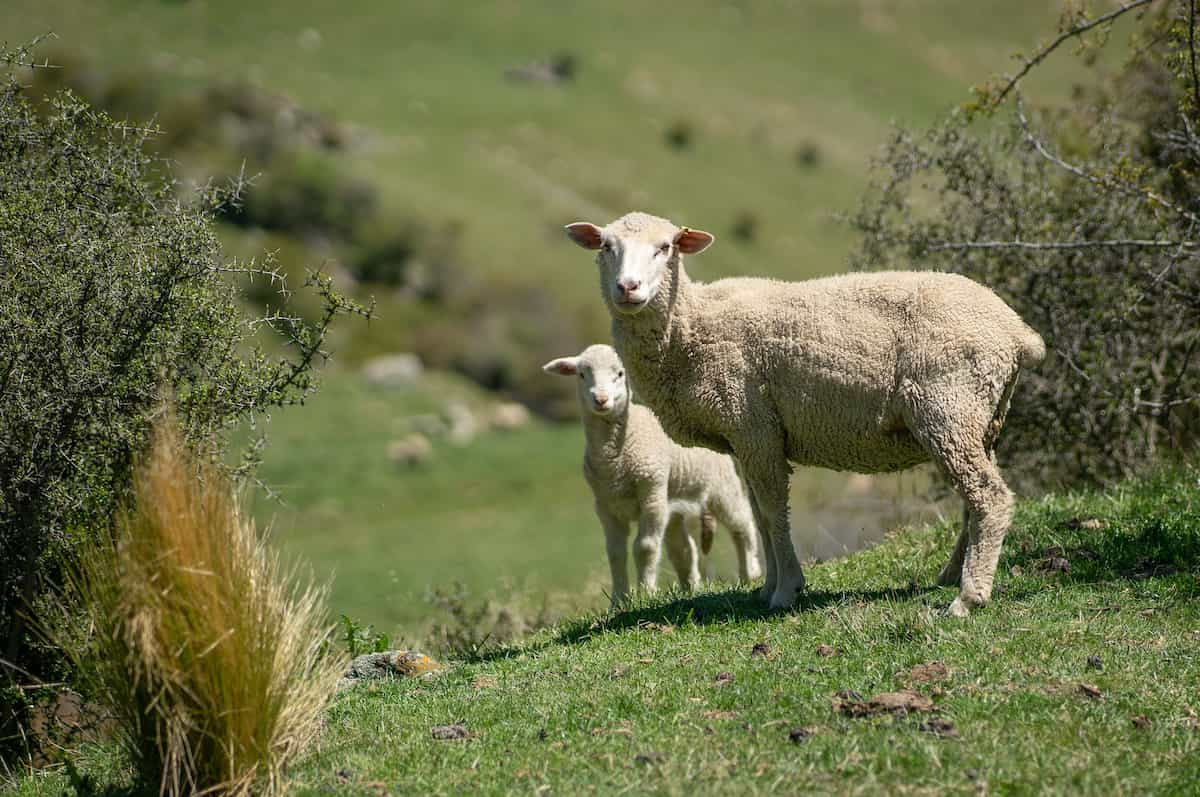The Merino sheep breed is one of the most renowned domestic sheep breeds for its fine wool. Because of its high-quality wool, this breed has been highly regarded. Animals of this type can live almost anywhere due to their adaptability to climate and pasture changes. The sheep are known for their fine and extensive wool production but can also be used for meat production. They are beautiful, useful, and not too demanding regarding the environment or diet, making them very cost-effective.

Merino Sheep Facts
Origin of Merino sheep Breed
The origins of the Merino sheep can be traced back to Spain in the 12th century. Later, breeders sent the sheep worldwide, where three subtypes were developed. Today, we have three types of Merino sheep: A, B, and C. Type A was the result of selection and inbreeding in Vermont. In Ohio, type B sheep were selected for their heavy fleece and fair mutton. A Delaine Merino of type C is also of American origin. Western and Southwestern states, including Pennsylvania, Michigan, and Iowa, are home to them.
Types of Merino Sheep
Booroola Merino
Originally, they came from the northern coast of Australia, on the Tableland of New South Wales. There are two reasons why Booloora Merino differs from other Marino breeds. Firstly, they are highly fertile compared to any other merino breed, as each female Booroola gives birth to 2-4 lambs on average. Second, they can breed most of the year, which makes their breeding sessions extensive.
Merinolandschaf
German Landsheep were crossed with Spanish Merinos in the 18th century, resulting in this breed. The breed accounts for almost 40% of the total sheep variants in Germany, making it one of the most popular breeds. The white sheep are robust in structure and shape, so their lambs have a better chance of surviving in extreme weather conditions.
South African Merino
The South African Merino breed has the largest African population, with almost 18 million animals. African Merino sheep have a planer structure, and the folds are moderate compared to Australian Merino sheep to survive the extreme weather conditions in Africa. The wool fiber diameter of these ewes and rams is around 21.7 microns under nominal and ideal conditions.
German Mutton Merino
The German mutton Merino, also known as Merino Fleisch Schaf, lives east of the Elbe River and spreads into the Ural mountains. They can adapt to changing climatic conditions and extreme weather conditions easily. The fiber diameter of their wool is evenly distributed between 23 and 24 microns. It is estimated that a ram can produce 7 to 10 kilograms of wool at a time, whereas a ewe’s feces contain only 4 to 5 kilograms of wool.
Characteristics of Merino Sheep
- A merino sheep typically weighs between 60 and 90 kilograms, with rams (males) weighing between 80 and 125 kilograms.
- A strong, sturdy frame supports their fleece, giving them a well-proportioned body.
- Merino sheep are distinguished by their thick, heavy fleece covering most of their bodies.
- In addition to being soft and elastic, wool grows close to the skin and has a natural crimp.
- Their faces and legs are usually wool-free, revealing white or light skin.
- There is a horned and a polled (hornless) variety of Merino sheep, which is more common in modern breeding practices.
- Merinos with horns have long, spiral horns, while those with polled heads have small stubs.
- Their rectangular-shaped eyes enable them to see everything behind them without turning their heads because they don’t have teeth in front of their upper jaw.
- As well as providing excellent insulation against cold and heat, their hooves are well-suited for navigating rough terrain.
In case you missed it: Columbia Sheep Facts: Origin, Physical Characteristics, Size, Pros, and Cons

How to Take Care of Merinos
- Water: You will need a steady supply of fresh, clean water for your sheep. When it is hot, they will drink more water. They drink approximately 8 liters of water a day. Ensure that the water you provide is clean and algae-free. Using an automatic waterer is more convenient than carrying water manually.
- Pastures: Make sure fields and pastures are properly fenced. Sheep are surprisingly agile animals. They are capable of climbing over walls, jumping over fences, and squeezing through small gaps. They can get stuck sometimes if the sheep do not fit through the gaps.
- Predators: You will also need to protect yourself against natural predators like foxes and wolves. Using a flock guardian dog or other methods can help, but losing a sheep is upsetting. It is heartbreaking to lose several sheep in an unnecessary slaughter.
- Flock Management: To increase the size of your flock, you will need rams and ewes. The ratio of rams to ewes should be one ram for every 50 ewes, but this depends on the ram’s age, masculinity, and experience. The size of a flock is important to sheep. There are close bonds formed among the animals as a flock. In the event of a threat to one of their friends, they will stand up for each other.
Advantages of Rearing Merino Sheep
- A Merino sheep is one of the best sheep you can raise for wool production. Known for its softness and fineness, the wool has about 2.6-3.9 inches long staples. Each ram shears about 10-12 kg of wool, and females shear up to 9-10 kg. The fleece is dense and even.
- Additionally, this breed is known for its excellent foraging abilities. It is hardy and adaptable. Their adaptability will differ depending on the type of Merino sheep you choose to raise. For example, Delaine sheep are well adapted to sheep production in the western as well as southwestern parts.
- The Merino sheep may not necessarily live longer than other sheep but are much more productive. Ewes can often produce wool for up to 12 years.
- Merino sheep are also an excellent option if you are looking for an easy-to-handle sheep. People have extensively domesticated and bred these animals to be friendly.
Disadvantages in Rearing Merino Sheep
- The primary disadvantage of these sheep is their slow growth rate. It takes time for these sheep to grow and become adults. As a result, they end up spending more money on them.
- It is easy for these sheep to succumb to extreme climatic conditions. Another major problem is this.
- They have a difficult time cutting their wool. In these sheep, foot rot is common, which makes them less attractive.
- There is a low lambing percentage for these sheep; they are not good breeders. There is a slow fertility rate.
In case you missed it: Suffolk Sheep Facts: Origin, Physical Characteristics, Size, Pros, and Cons

Conclusion
Merino sheep farms thrive on the right breed and flock management, including good food, clean water, and adequate space. Herders must shear these sheep every year, leaving them enough wool to protect themselves from extreme temperatures. Additionally, horned breeds need proper management and care to prevent injuries to humans and other flock members.
- Feed Your Flock for Less: Top 10 Tips to Save on Chicken Feed
- Ultimate Guide to Ossabaw Island Hog: Breeding, Raising, Diet, and Care
- Hatching Answers: The Top 10 Reasons Your Chickens Aren’t Laying Eggs
- Eggs and Economics: Breaking Down the Cost of Raising Backyard Chickens
- Defend Your Greens: Proven Methods to Keep Iguanas Out of Your Garden
- Ultimate Guide to Cinnamon Queen Chicken: A Comprehensive Guide for Beginners
- Ultimate Guide to California Tan Chicken: Breeding, Raising, Diet, Egg-Production and Care
- Ultimate Guide to Marsh Daisy Chicken: Breeding, Raising, Diet, and Care
- 10 Types of Chicken Farming Businesses You Can Start for Profits